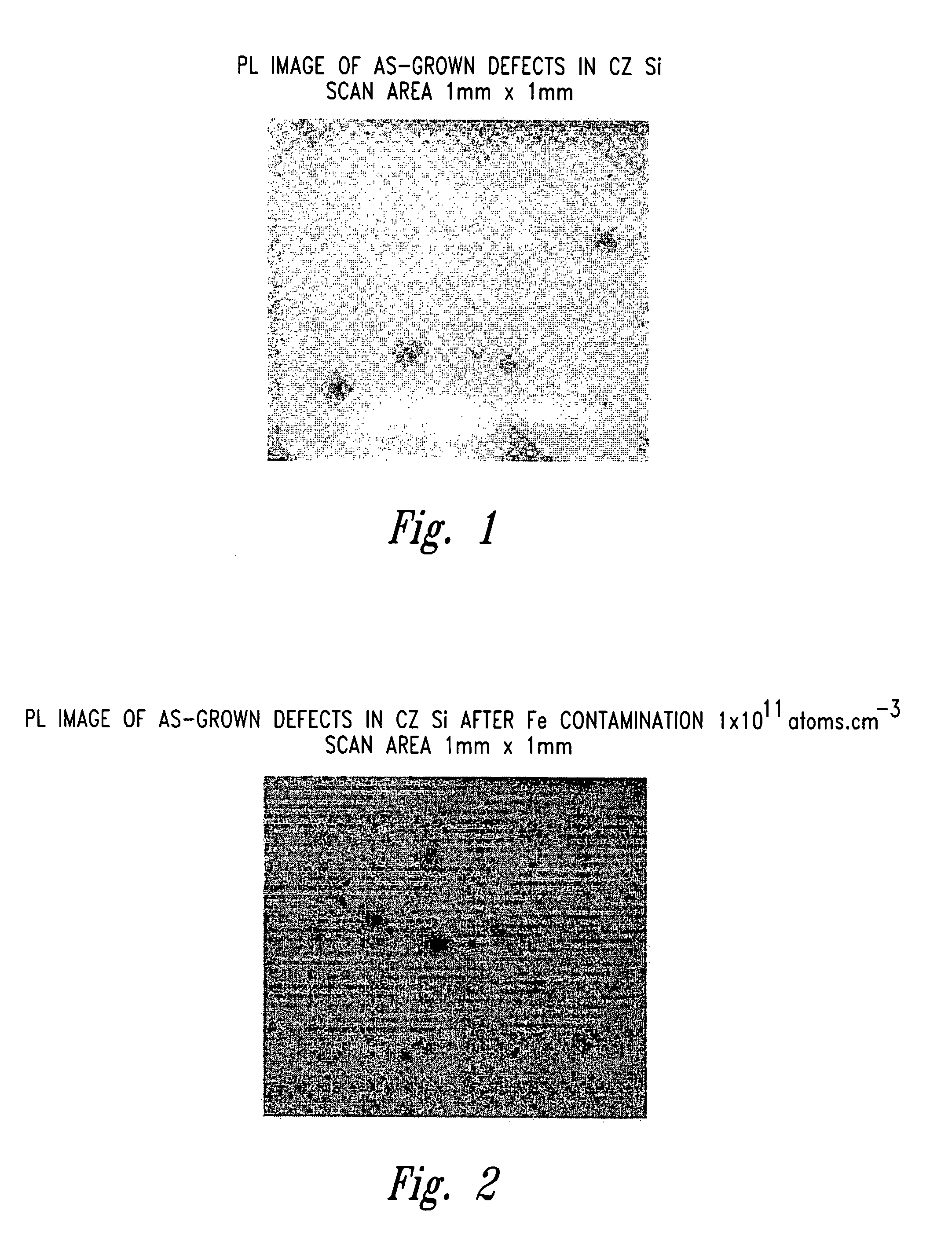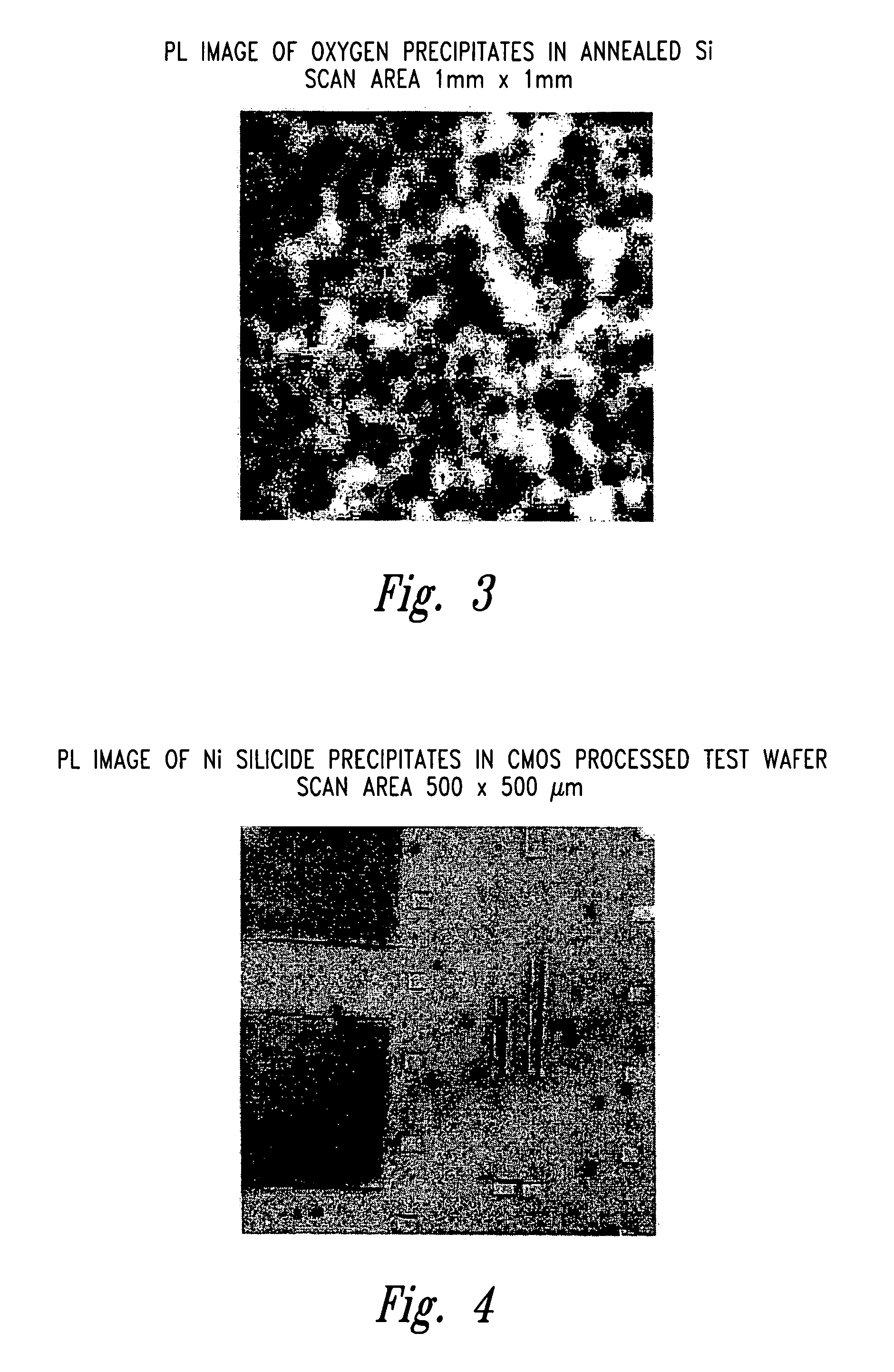Micro defects in semi-conductors
a technology of semi-conductors and defects, applied in semiconductor/solid-state device testing/measurement, optical radiation measurement, fluorescence/phosphorescence, etc., can solve problems such as yield loss and reliability problems, device failure, and dislocation free wafers may not be able to remain this way
- Summary
- Abstract
- Description
- Claims
- Application Information
AI Technical Summary
Benefits of technology
Problems solved by technology
Method used
Image
Examples
Embodiment Construction
[0047]Referring to the figures and firstly to FIG. 9 there is shown a diagrammatic illustration of an apparatus in accordance with the invention.
[0048]The apparatus essentially comprises a PL imaging microscope which: towards the right hand side, comprises a bank of lasers 3–8; towards the bottom comprises a sample stage such as an X-Y table or R-Θ table; towards the left hand side comprises a microprocessor 40 and a display screen 39 and in the centre of the Figure there are shown various optical components for directing light through the system.
[0049]In the embodiment shown in FIG. 9, six lasers are provided with a view to probing different depths in the sample. However, it is within the scope of the invention to use only one laser, or indeed to use a greater number of lasers. In any event, at least one of the lasers is a high intensity laser and ideally has a spot size of between 0.1 mm and 0.5 micron and a power density of between 104 to 109 watts / cm2. A laser selector 16 couple...
PUM
| Property | Measurement | Unit |
|---|---|---|
| size | aaaaa | aaaaa |
| size | aaaaa | aaaaa |
| wavelengths | aaaaa | aaaaa |
Abstract
Description
Claims
Application Information
 Login to View More
Login to View More - R&D
- Intellectual Property
- Life Sciences
- Materials
- Tech Scout
- Unparalleled Data Quality
- Higher Quality Content
- 60% Fewer Hallucinations
Browse by: Latest US Patents, China's latest patents, Technical Efficacy Thesaurus, Application Domain, Technology Topic, Popular Technical Reports.
© 2025 PatSnap. All rights reserved.Legal|Privacy policy|Modern Slavery Act Transparency Statement|Sitemap|About US| Contact US: help@patsnap.com



